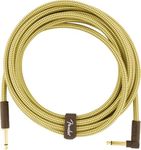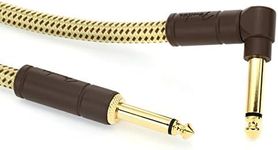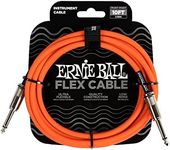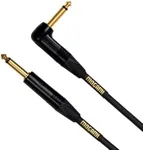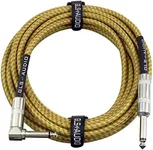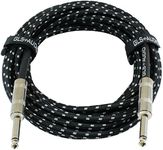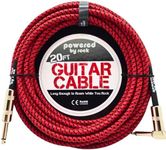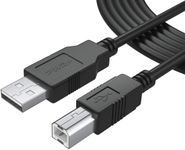Buying Guide for the Best Instrument Cables
Choosing the right instrument cable is crucial for ensuring the best sound quality and performance of your musical instruments. Whether you're a professional musician or a hobbyist, understanding the key specifications of instrument cables will help you make an informed decision. Here are the main factors to consider when selecting an instrument cable.LengthThe length of an instrument cable is important because it affects both convenience and sound quality. Shorter cables (under 10 feet) are ideal for minimizing signal loss and interference, making them suitable for studio settings or small stages. Medium-length cables (10-20 feet) offer a balance between mobility and sound quality, perfect for most live performances. Longer cables (over 20 feet) provide maximum flexibility on stage but may introduce more signal degradation. Choose a length that suits your playing environment and mobility needs.
Connector TypeInstrument cables typically come with different types of connectors, such as 1/4-inch (TS) plugs, XLR connectors, or RCA plugs. The 1/4-inch TS plug is the most common for guitars and keyboards. XLR connectors are often used for microphones and balanced connections, while RCA plugs are used for certain audio equipment. Ensure the connectors match the input and output jacks of your instruments and equipment. For most guitarists and bassists, 1/4-inch TS plugs are the standard choice.
ShieldingShielding is a critical feature that protects the cable from electromagnetic interference (EMI) and radio frequency interference (RFI). There are three main types of shielding: braided, spiral, and foil. Braided shielding offers the best protection and durability, making it ideal for professional use. Spiral shielding provides good flexibility and moderate protection, suitable for most general purposes. Foil shielding is the least durable but offers adequate protection for stationary setups. Choose the type of shielding based on your need for durability and interference protection.
Cable GaugeThe gauge of the cable refers to the thickness of the wire inside. Thicker cables (lower gauge numbers) can carry more current and are generally more durable, but they are also less flexible. Thinner cables (higher gauge numbers) are more flexible and easier to handle but may be less durable. For most instrument cables, a gauge between 18 and 24 is common. If you need a cable for heavy-duty use or long distances, opt for a lower gauge (thicker cable). For everyday use and shorter distances, a higher gauge (thinner cable) will suffice.
CapacitanceCapacitance is a measure of how much electrical charge a cable can store, and it affects the high-frequency response of your signal. Lower capacitance cables preserve more of the high frequencies, resulting in a clearer and more detailed sound. Higher capacitance cables may roll off some of the high frequencies, which can be desirable for certain warm or vintage tones. If you prefer a bright and clear sound, look for cables with low capacitance (measured in picofarads per foot). If you want a warmer tone, a higher capacitance cable might be more suitable.
DurabilityDurability is an important factor, especially if you frequently perform live or move your equipment around. Look for cables with strong outer jackets, reinforced connectors, and strain relief features to prevent damage from bending and pulling. High-quality materials and construction will ensure that your cable lasts longer and performs reliably. If you are a touring musician or play gigs regularly, investing in a durable cable is essential. For home or studio use, durability is still important but may not need to be as robust.



